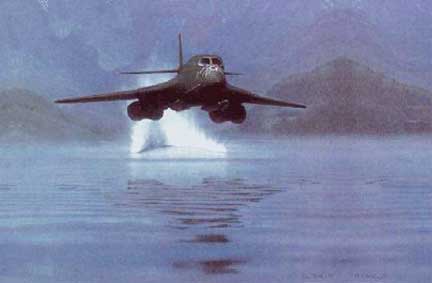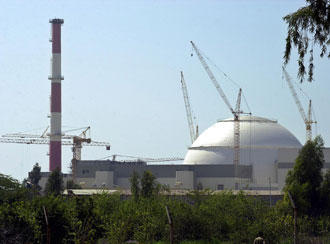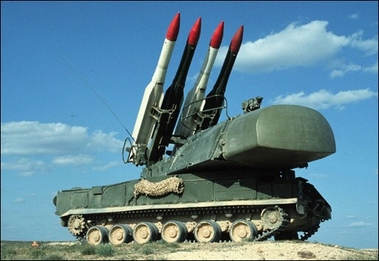
US Nuclear B-1 Bomber On Iran âAttack Runâ Shot Down / Ellsworth B-1 catches fire in Middle East / Photo (Hal Turner)
Sorcha Faal, and as reported to her Western Subscribers / Ryan Woodard and Steve Miller, Rapid City Journal staff
|
|
In a disturbing continuation of our April 2nd report, “Russia ‘Alarmed’ As US Readies April Nuclear Attack On Iran”, and wherein we reported on the United States War Leaders plans to attack Iran, Russian Military Analysts are today reporting that the US Air Force has ‘shot down’ one of their own bombers reported to be on an ‘attack run’ towards Iran’s Bushehr nuclear plant. [Pictured 3rd down on left]
According to these reports, an American B-1 Lancer supersonic strategic nuclear bomber based out of the United States Ellsworth Air Force Base, and which bills itself as, "The "backbone" of global engagement for the 21st century", attempted to ‘deviate’ from its assigned flight path over the Persian Gulf Nation of Qatar by rapidly descending for what these reports state is ‘typical’ for these types of aircraft when engaging in combat.
When contacted by US Air Force officials stationed at Qatar’s Al Udeid Air Base, these reports continue, this B-1 nuclear bomber ‘squawked’ what is called a ‘CIA Identification Code’, and not, what Russian Military Analysts say, was the correct code for American fighter aircraft over flying Middle Eastern Nations, whereupon it was ordered to land or face an ‘immediate’ shoot down.
Russian Military intercepts of US Air Force communications, during this incident, portray a chaotic scene where after refusing to change its course, American Military Officials ordered a US F-16 Fighter Jet to ‘strafe’ the B-1 nuclear bomber, but then a US Naval Carrier, stationed in the Persian Gulf, ‘ordered’ its fighter jets to attack those of the US Air Force.
As US Air Force Commanders launched more of their fighter jets into the air against their own Naval Forces, the B-1 nuclear bomber was reported to have been hit by cannon fire from the F-16 fighter jet, after which it changed its course for an ‘emergency’ landing at the Al Udeid Air Base and which upon landing ‘exploded’. These reports state that no further hostilities between the US Air Force and its Navy counterparts during this incident occurred.
American propaganda media sources, though acknowledging the destruction of this B-1 nuclear bomber, have failed, so far, to complete their fabrication of this incident into the final coherent form they deem suitable for their citizens, and as we can read as reported by the Dakota Voice News Service, and as we can read:
Russian Military Commanders further speculate, in these reports, that the United States Defense Secretary, Robert Gates, and who last week ordered a full inventory of all American nuclear weapons, was ‘no doubt’ the US Military Commander who issued the ‘shoot down’ order for this B-1 nuclear bomber as he has been reported long at odds with the American Vice President, Richard Cheney, over the latter’s push for an immediate nuclear strike against Iran.
However, though this latest attempt by dissident American Military Commanders to stop their War Leaders from plunging the World into Total War has, apparently, been successful, this may not be the case for long, and as we can read as reported by the Rutland Herald News Service in their article detailing the concerns of the former head of the UN weapons inspection team, Scott Ritter, and which says:
Among the war clouds Ritter cited were:
Most unfortunately for the American people, and also the World, is that the last chance for peace, and as Scott Ritter had also noted, is now gone as Admiral William Fallon has fallen, and as we can read as reported by Britain’s Times Online News Service in their article titled "Admiral William Fallon quits over Iran policy", and which says:
With this ‘lone voice’ of reason of Admiral Fallon now gone from the scene, the American people are now left only with their ‘lone wolf’ War Leaders…may God have mercy on them.
[Ed. Note: The United States government actively seeks to find, and silence, any and all opinions about the
Translation to Spanish by: Sister Maru Barraza,
www.whatdoesitmean.com/index1087.htm
************************************************************************
FROM: Hal Turner
B-1 BOMBER "CATCHES FIRE" IN MIDDLE EAST
BUT THERE'S MORE TO THE STORY THAN BEING FIRST REPORTED. . . .

According to AMERICAN media, this state-of-the-art, nuclear equipped, long-range bomber "caught fire." HOWEVER, other reports from around the world indicate the plane "deviated from its flight plan" then, squawked a "CIA identification code" and was ordered by US Air Force Commanders in the region to land at a US base immediately. When the plane failed to comply, US Air Force jets were scrambled to "strafe" the plane and coerce it to land!
Reports coming in this morning say the plane was going to attack targets inside Iran and was stopped by fellow Air Force fighters. As the B-1 was being straffed by USAF fighters to coerce its ordered landing, a US Aircraft carrier in the region scrambled its own fighter jets to go after the US AIR FORCE jets!!
********************************************************************************************************************************
Ellsworth B-1 catches fire in Middle East
Crew escapes safely
By Ryan Woodard and Steve Miller, Journal staff Saturday, April 05, 2008
By Ryan Woodard and Steve Miller, Journal staff
An Ellsworth Air Force Base B-1B Lancer bomber caught fire Friday after landing at the U.S. military's Al Udeid Air Base in Qatar, according to Al Udeid public-affairs officials.
Four crew members evacuated the bomber safely, and the fire was contained, said Sgt. Sandra Lucas of the Al Udeid public affairs office.
The plane was taxiing after landing and became involved in a "ground incident," according to Lucas.
Sgt. Steven Wilson of the Ellsworth public affairs office said the crew members from the aircraft were all from Ellsworth.
He said he could not comment on the incident until it has been investigated further.
Air operations at Ellsworth will remain open, he said, but Al Udeid has been shut down.
"The runway is currently closed," he said Friday evening. "All airborne assets assigned to Al Udeid are being diverted to other locations in the interim. It's too soon to know at this point how long it will be closed."
Al Udeid is the headquarters of all U.S. air operations in the Middle East, according to wire reports.
This is the third time in the past month that an Ellsworth bomber has been involved in some type of incident while performing flight operations.
Asked if the frequency of the incidents is a concern for Ellsworth, Wilson said, "Each incident is under investigation by the appropriate authorities."
On Friday, March 7, an Ellsworth B-1 collided with two emergency-response vehicles after landing after reporting an in-flight emergency at Andersen Air Force Base in Guam. The plane had stopped on the taxiway but began to roll, which led to the collision, according to Ellsworth public affairs officials.
The aircraft was returning to Ellsworth after participating in the Singapore Air Show.
On Thursday, March 20, crews from Box Elder and Ellsworth extinguished several grass fires that were apparently caused by a B-1 that made an emergency landing at the base. Base officials have not confirmed whether the B-1 caused the fires.
Ellsworth officials have released no further information about either of those two incidents.
It is not known whether or when the B-1 that was involved in the Qatar incident will return to Ellsworth, Wilson said.
Despite the most recent incident, the 20-plus-year-old bombers are wearing relatively well, according to Pat McElgunn, director of the Ellsworth Task Force for the Rapid City Area Chamber of Commerce.
"Things do wear out. But in terms of the integrity of the air frame, the plane is doing just fine," he said. "It's high maintenance because it's a complex aircraft."
McElgunn said military aircraft and crews undergo much greater stress than civilian aircraft, both in combat and training missions.
He said the fire on Friday could have been caused by a multitude of things, including hot brakes or a fuel leak.
As of March of 2007, the B-1 fleet had a total of 500,000 flight hours since the bombers were introduced.
For that amount of flight hours, there have been relatively few accidents, McElgunn said.
There have been nine B-1s crashes, including the crash of a prototype in 1984, according to the Web site globalsecurity.org.
"Every accident is significant," McElgunn said. "That number would be high for civilian aircraft. But military aircraft are put into lots of stress. They have to train hard, they have to train out of the comfort zone. You have to fly like you fight."
Also, McElgunn said, when flying daily missions and long-duration missions, "things break sometimes."
Contact Ryan Woodard at 394-8412 or ryan.woodard@rapidcityjournal.com.
www.rapidcityjournal.com/articles/2008/04/05/news/local/doc47f68a8fc90d0408650464.prt




